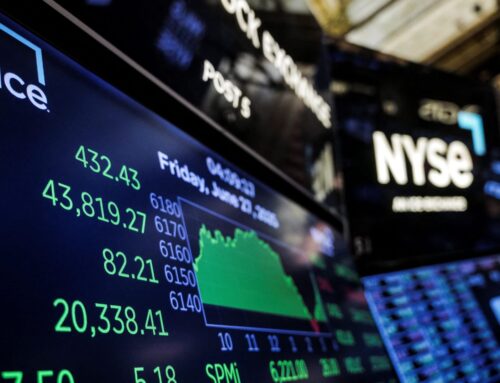Ethereum between sales and institutional accumulation: ETH on the edge
July 2, 2025
Ethereum faces decisive weeks in the crypto arena, with movements from the Ethereum Foundation and institutional entries that are redefining investor sentiment.
The analysis of treasury dynamics, technical indicators, and the moves of major investors highlights opposing scenarios, between risks of collapse and breakout prospects.
Summary
In recent weeks, the Ethereum Foundation has transferred over 32 million dollars in ETH to multisig wallets. Reports from LookOnChain show how, every day, about 1,000 ETH – equivalent to 2.46 million dollars – have left the foundation, thus fitting into a broader transfer plan that has totaled 13,000 ETH overall.
These movements have not gone unnoticed by the eyes of the community Ethereum. Criticisms intensified in 2025, with many supporters asking the Foundation to focus on options like staking instead of direct sales.
The decision to liquidate ETH, according to some analysts, risks undermining confidence in the main stronghold of the ecosystem and negatively influencing price trends.
An employee of the Foundation defended the approach, calling it “active use of ETH.” However, these statements have fueled the debate, with the demand for strategies that can balance liquidity needs without resorting to public sales.
Vitalik Buterin supported the current management, emphasizing how massive staking involves regulatory risks and can compromise neutrality on possible hard fork.
However, Buterin himself has admitted that the context is evolving: the Foundation is indeed exploring with more conviction the opportunities offered by finanza decentralizzata.
- Over 120 million dollars have been allocated on the main protocols such as Aave, Spark, and Compound.
- A loan of 2 million dollars in stablecoin GHO has also been activated, strengthening the commitment to the DeFi ecosystem.
In an attempt to make management more systematic, the Ethereum Foundation has introduced a budget policy with an operational horizon of 2.5 years and a 15% cap on annual expenses.
Transparent reporting and quarterly performance reports have also been initiated, important signals towards greater accountability.
Finally, June 2025 saw a restructuring of the Ricerca e Sviluppo division, now renamed “Protocol,” with a focus on Layer 1 scalability, Layer 2 development, and increased usability, prioritizing internal efficiency and the enhancement of the Ethereum network.
Despite the bear pressure caused by the Foundation’s sales, the most recent data suggests that Ethereum has found support among large holders and institutional investors.
The addresses holding between 1,000 and 10,000 ETH have risen to all-time highs, reaching 14.2 million ETH, levels seen only during the lows of 2018, which preceded one of the most spectacular bull run in the entire sector.
Institutions like Fidelity have reinforced this trend with the purchase of 25.7 million dollars in ETH, expanding the number of institutional addresses to almost 3,600, one of the highest figures ever recorded.
Such dynamics suggest that, beyond the sales of the Foundation, there is a robust confidence in the medium-term growth potential of Ethereum.
Historical analyses confirm that accumulation waves of this type have often preceded prolonged uptrends, as happened between 2019 and 2021, when ETH reached 4,800 dollars.
The current competitive environment with networks like Solana, Base, and BNB does not seem to hinder the expansion of institutional accumulation.
On the level of technical analysis, the main focus remains on the 200-period exponential moving average (EMA 200), now positioned just above 2,270 dollars. Historically, this threshold has represented a fundamental barrier during corrections, providing solid resistance to negative pushes and acting as a springboard for new bull rallies.
The levels of Fibonacci identify the next area of interest at the 4,000 dollar mark, a target that is linked to the structure of rising lows highlighted in recent weeks. Furthermore, the comparison between the consolidation patterns between 2017 and 2025 reveals a surprising similarity: even then Ethereum was consolidating before witnessing explosive accelerations towards new all-time highs.
The oscillator RSI, a key indicator for assessing the strength of the trend, is around the neutral value of 50. In the analysis of past cycles, this phase of equilibrium has often preceded very marked directional movements, both in bull and bear directions.
Due to the convergence of technical supports, institutional accumulation, and growing participation in DeFi, Ethereum is now at a “breaking point”: a breakout above $2,800 could trigger a run towards $4,000 and, in perspective, up to $7,300. However, a downward break of the supports between $2,200 and $2,800 could risk triggering a deeper correction, with the 200 EMA as the last line of defense for the bull structure.
The current market configuration reflects a tension between the funding needs of the Ethereum Foundation and the accumulating drive of whales and institutional entities like Fidelity. The new governance policies, diversification in DeFi strategies, and the consolidation of large holders outline a rapidly changing ecosystem.
The near future of Ethereum will depend on the holding of crucial technical levels and the Foundation’s ability to innovate on the financial side, without compromising the community’s trust. It is therefore crucial to monitor the indicators and carefully evaluate the next movements: Ethereum is facing a fork, between a potential collapse and the concrete possibility of a new bull run.
For investors and observers, it is time to refine strategies and closely follow every signal: at stake is the positioning within one of the most vital and visionary blockchain ecosystems in the global financial landscape.
Search
RECENT PRESS RELEASES
Related Post




